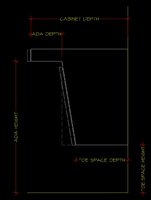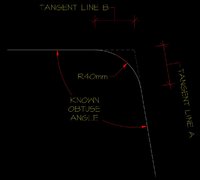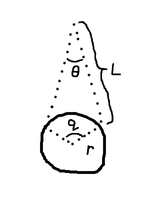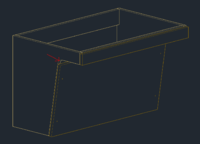JDfromtheIE
New member
- Joined
- Nov 10, 2020
- Messages
- 6
This is my first post here. Thank you for Having me.
I need to figure out a formula to calculate the length of 2 tangent lines given the radius of the circle/arc and the angle of the 2 lines.
A little background on what I'm trying to achieve...
I'm an architectural woodworking engineer (fancy for cabinet engineer). I'm trying to add a radius to what has always been a straight angled notch.
This radius will always be 40mm but the angle between these 2 tangent lines can and will change. This angle will always be obtuse do to the design of this cabinet.
I've attached 1 image showing how I calculate the angles and the other image shows my question.
Any help would be greatly appreciated


I need to figure out a formula to calculate the length of 2 tangent lines given the radius of the circle/arc and the angle of the 2 lines.
A little background on what I'm trying to achieve...
I'm an architectural woodworking engineer (fancy for cabinet engineer). I'm trying to add a radius to what has always been a straight angled notch.
This radius will always be 40mm but the angle between these 2 tangent lines can and will change. This angle will always be obtuse do to the design of this cabinet.
I've attached 1 image showing how I calculate the angles and the other image shows my question.
Any help would be greatly appreciated




